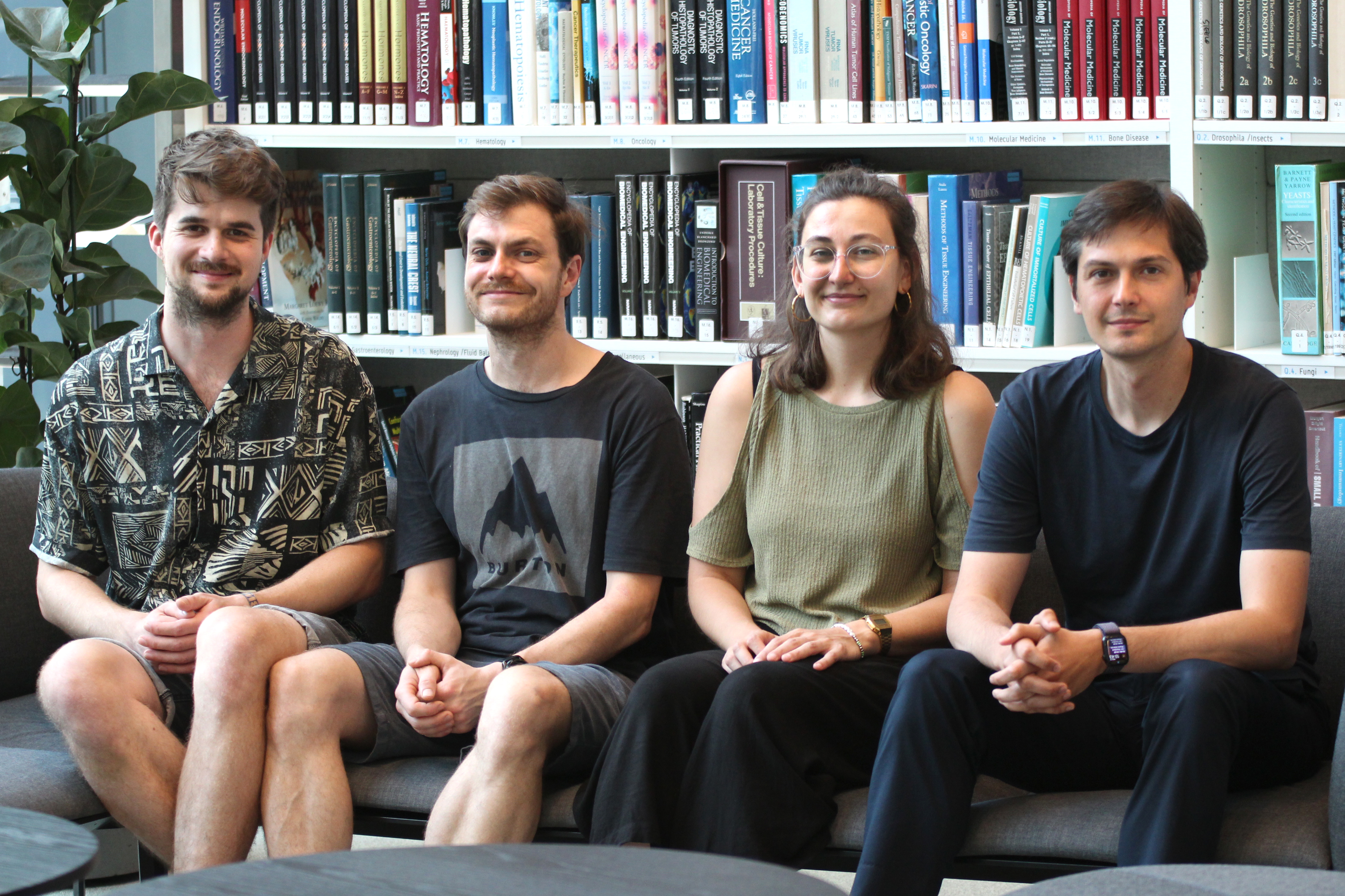Unlocking the disassembly of a molecular editor

Splicing is an essential process that prepares messenger RNA (mRNA) for protein production, by using the spliceosome as an editing machine to form mature mRNA. While much is known about how the spliceosome comes together and functions during splicing, how it disassembles after completing its task was unclear. Researchers led by Clemens Plaschka at the IMP, were now able to visualise the disassembly of the spliceosome at unprecedented detail, revealing that ‘multi-factor authentication’ is required to initiate the process. Their findings were published in the journal Nature.
Proteins are the essential building blocks for all life’s functions. They are produced from genetic instructions stored in DNA and conveyed by messenger RNA (mRNA). But before mRNA can guide protein production, it undergoes splicing, a crucial editing process that occurs in about 95 percent of human genes. During this process, the spliceosome—a large and dynamic molecular machine—cuts pre-mRNA, the initial RNA transcript that includes both coding regions (exons) and non-coding regions (introns). The spliceosome removes the introns and joins the exons together, creating mature mRNA ready for protein production.
Throughout splicing, the spliceosome undergoes structural rearrangements that allows it to perform this editing function. First, to facilitate the precise recognition and cutting of introns. Then, once the editing is completed, to allow the complex to disassemble and finally release the mature mRNA, allowing for new rounds of splicing. This cycle of assembly, remodelling, and disassembly is essential for the spliceosome to perform its fundamental role in the regulation of gene expression.
While there has been significant progress in understanding the assembly of the spliceosome, and its remodelling for editing activities, scientists have not yet been able to visualise complete spliceosomes undergoing disassembly. How the cell ensures this process occurs at the right time, preventing the premature disassembly of components still needed for splicing while maintaining steady gene expression, has remained a mystery.
Researchers from the lab of Clemens Plaschka at the IMP in collaboration with the lab of Luisa Cochella, IMP adjunct investigator at the Johns Hopkins School of Medicine, have now shown at unprecedented detail how the spliceosome disassembles. The scientists achieved this feat by combining cutting-edge cryo-electron microscopy (cryo-EM) with biochemical and genetic data. Their findings are now published in the journal Nature.

A molecular giant’s in-built self-destruct button
“The spliceosome is made of five small nuclear RNAs (snRNAs) and more than 100 different proteins.” explains Patricia Rothe, co-first author and PhD student in the Plaschka lab. “It assembles from scratch on each intron via a carefully coordinated assembly process”.
These snRNAs form the spliceosome's core, which cuts out the intron and joins the exons. Once the editing is complete, the mature mRNA is released, and the spliceosome is ready to be taken apart to allow its components to be reused for future splicing events. If errors occur, faulty spliceosomes are likely discarded through a similar process to ensure accuracy.
To observe how this molecular giant comes apart, the researchers studied the spliceosome using cryo-EM, starting with a complex purified from the nematode C. elegans and from human cells.
“Working with C. elegans as a model organism has been incredibly beneficial,” says Justus Kleifeld, co-first author and a student in the Vienna BioCenter PhD Program. “Looking at both the worm and human complexes, we found striking similarities. The worm's molecular splicing mechanism is remarkably similar to that of humans, with the added technical advantage of having more stable spliceosomes, resulting in sharper images compared to the human complex.”
“Our results reveal that an elaborate 'multi-factor authentication' system is behind the spliceosome’s disassembly,” explains Matthias Vorländer, co-first author and postdoc in the Plaschka lab. “Four different proteins need to simultaneously connect to very different parts of the spliceosome to initiate its disassembly, acting like security checks.”
The helicase DHX15–a type of protein that unwinds molecules such as DNA and RNA–plays a central role in this process, as it can solely unwrap the core of the spliceosome once all factors are in place. “Cryo-EM enabled us to see the spliceosome’s in-built self-destruct button.” continues Vorländer. “When all the right proteins are in place, they signal to the helicase that it’s time to act, and only then disassembly can finally occur.” concludes Vorländer. This selective and secure process ensures that the editing machinery is only dismantled when all the necessary proteins are in place, thereby maintaining steady gene expression and preventing premature disassembly.
“This has been a highly collaborative effort, both in and outside our lab” says Clemens Plaschka “This project could have only happened at the IMP, thanks to our collaboration with Luisa Cochella’s lab. Her expertise in C. elegans biology and genetics has been fundamental for our study.” concludes Plaschka.
The research opens the door to understanding splicing quality control, particularly what happens when faulty spliceosome complexes form. By shedding light on the role of the DHX15 helicase, it also reveals the complexity behind the regulation of this class of enzymes, providing a valuable model for future studies.
Original Publication
Matthias K. Vorländer, Patricia Rothe, Justus Kleifeld, Eric Cormack,
Lalitha Veleti, Daria Riabov-Bassat, Laura Fin, Alex W. Phillips, Luisa Cochella,
and Clemens Plaschka: Mechanism for the initiation of spliceosome disassembly. Nature. DOI: https://doi.org/10.1038/s41586-024-07741-1
About the Vienna BioCenter PhD Program
Much of the work underlying this publication was done by doctoral students of the Vienna BioCenter PhD Program. Are you interested in a world-class career in molecular biology? Find out more: https://training.vbc.ac.at/phd-program/
Further reading